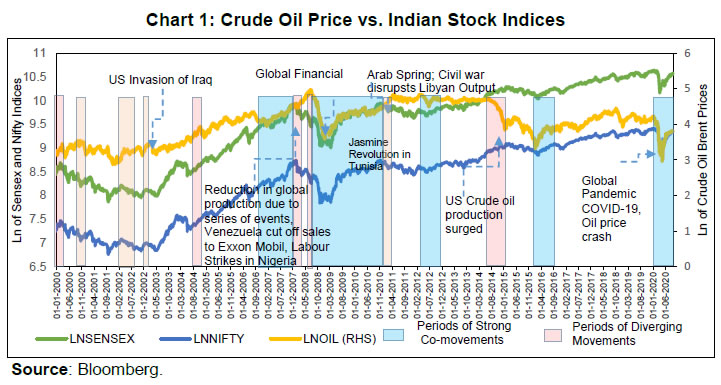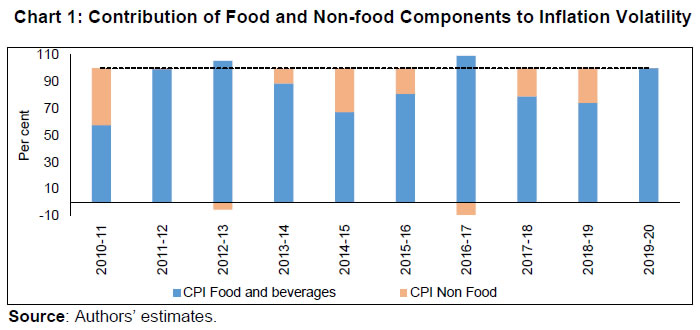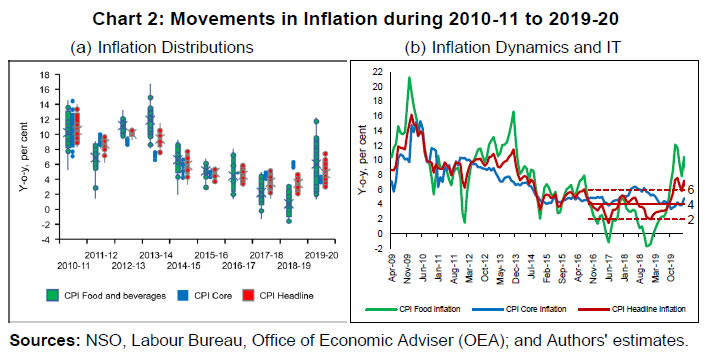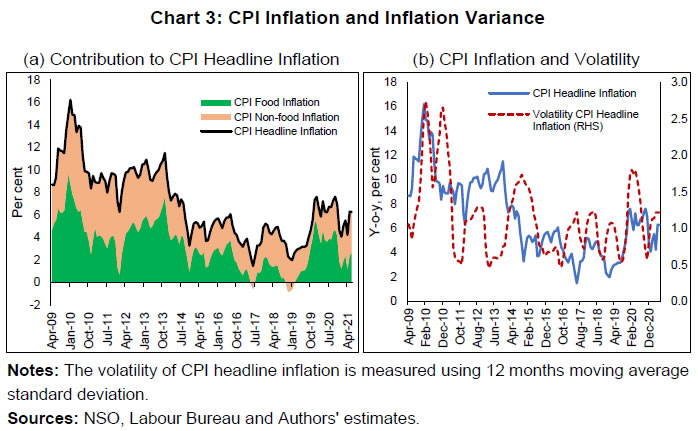第一章
Frank Algernon Cowperwood 出生的费城是一座拥有二十五万人口的城市。它坐落着漂亮的公园、著名的建筑,充满了历史记忆。我们和他后来知道的许多东西当时并不存在——电报、电话、快递公司、远洋轮船、城市投递邮件。没有邮票或挂号信。电车还没有到。取而代之的是公共汽车,为了长途旅行,缓慢发展的铁路系统仍然主要由运河相连。
Cowperwood 的父亲在 Frank 出生时是一名银行职员,但十年后,当这个男孩已经开始变得非常理智、充满活力地看待这个世界时,Henry Worthington Cowperwood 先生却因为银行行长的去世结果,他领先于其他军官,继承了升职的出纳员腾出的位置,对他来说,每年有 3500 美元的丰厚薪水。他立刻决定,正如他高兴地告诉他的妻子,把他的家人从 Buttonwood 街 21 号搬到新市场街 124 号,一个更好的社区,那里有一栋漂亮的三层楼高的砖房,而不是他们现在的两层——传说中的住所。有可能有一天他们会做出更好的东西,但目前这已经足够了。他万分感激。
亨利·沃辛顿·考珀伍德 (Henry Worthington Cowperwood) 是一个只相信他所看到的并且满足于做他自己的人——一个银行家,或者一个有前途的人。此时的他是个举足轻重的人物——高大、瘦削、善于审问、善于办事——留着漂亮、光滑、剪得很短的侧胡须,几乎长到耳朵的下垂处。他的上唇光滑,长得奇异,长而直的鼻子和尖尖的下巴。他的眉毛浓密,衬托出模糊的灰绿色眼睛,头发短而光滑,分开得很好。他总是穿着礼服大衣——那时候金融界很流行——戴着高礼帽。他保持双手和指甲一尘不染。他的举止可以说是严厉的,但实际上与其说是严肃,不如说是有教养。
他雄心勃勃地想在社会和经济上取得成功,因此他非常注意与谁交谈或与谁交谈。他害怕表达狂热或不受欢迎的政治或社会观点,正如他害怕被人视为邪恶人物一样,尽管他确实没有任何具有重大政治意义的观点可以表达。他既不反对也不支持奴隶制,尽管空气中弥漫着废奴情绪及其反对情绪。他真诚地相信,如果一个人只有资本和那种奇特的东西,一种有吸引力的个性——赢得他人信任的能力,那么巨大的财富就可以从铁路中获得。他确信安德鲁·杰克逊反对尼古拉斯·比德尔和合众国银行是完全错误的,这是当时最重要的问题之一;他很担心,他很可能会,到处漂浮并不断流入他的银行的野猫钱的完美风暴——当然是打折的,然后再次发放给焦急的借款人以获利。他的银行是费城第三国民银行,位于整个费城乃至当时几乎所有国家金融中心的中心——第三街——其所有者经营经纪业务作为副业。在那些日子里,无论大小,国有银行都在肆虐,几乎没有对不安全和未知资产的监管发行票据,并以惊人的速度倒闭和停业;了解所有这些是考珀伍德先生担任职务的重要要求。于是,他变成了小心之魂。不幸的是,对他来说,他在很大程度上缺乏在任何领域脱颖而出所必需的两样东西——魅力和远见。他注定不会成为一位伟大的金融家,尽管他被认为是一位相当成功的金融家。
考珀伍德夫人具有宗教气质——一个身材矮小的女人,浅棕色的头发和清澈的棕色眼睛,在她那个时代非常迷人,但变得相当古板和实事求是,倾向于非常认真地对待三个儿子和一个女儿的母性关怀。前者由最年长的弗兰克担任队长,这让她非常烦恼,因为他们总是在城市的不同地方进行探险,可能会和坏男孩混在一起,看到和听到他们不应该看到或听到的东西听到。
弗兰克·考珀伍德 (Frank Cowperwood) 年仅十岁,就已是天生的领导者。在他就读的走读学校,以及后来在中央高中,他被认为是一个在任何情况下都可以毫无疑问地相信常识的人。他是一个坚强的年轻人,勇敢而勇敢。从一开始,他就想了解经济和政治。他对书一点都不感兴趣。他是一个干净、健壮、身材匀称的男孩,有一张明亮、轮廓分明、锐利的脸。大而清晰的灰色眼睛;宽额头;短而刚毛的深棕色头发。他有一种敏锐、敏捷、自给自足的态度,总是带着对明智答复的强烈渴望提出问题。他从不感到疼痛,吃得津津有味,用铁杖统治他的兄弟们。“加油,乔!” “快点,埃德!” 这些命令的发出并不粗暴,但总是以肯定的方式,乔和埃德来了。他们从一开始就将弗兰克视为大师,他们热切地倾听他所说的话。
他一直在思考,思考——一个事实和另一个事实一样让他感到惊讶——因为他想不通他进入的这个东西——这个生活——是如何组织起来的。这些人是怎么来到这个世界上的?他们来这里做什么?到底是谁先开始的?他的母亲给他讲了亚当和夏娃的故事,但他不相信。离他家不远的地方有一个鱼市,他去河岸看望父亲,或者放学后带兄弟们去探险,他喜欢在一个鱼缸前看一眼某个鱼缸。存放特拉华湾渔民带来的奇怪海洋生物标本的商店。有一次他在那里看到了一匹海马——只是一种看起来有点像马的奇怪的小海洋动物——还有一次他看到了本杰明·富兰克林的发现所解释的电鳗。有一天,他看到鱼缸里放了一只鱿鱼和一只龙虾,而与它们有关的是一场悲剧的见证,这场悲剧伴随了他一生,并在理智上大大澄清了一切。从懒惰的旁观者的谈话中可以看出,龙虾没有得到任何食物,因为鱿鱼被认为是他合法的猎物。他躺在黄色沙滩上透明玻璃缸的底部,显然什么也看不见——你无法分辨他那双圆珠状的黑色纽扣眼睛是从哪个方向看的——但显然它们从未离开过鱿鱼的身体。后者,质地苍白,蜡质,看起来很像猪油或玉,以鱼雷的方式移动;但他的一举一动显然都没有离开敌人的眼睛,因为他身体的一小部分逐渐消失,被追捕者无情的利爪折断。龙虾会像弹射器一样跳到乌贼显然在做梦的地方,而乌贼非常警觉,会飞奔而去,同时射出一团墨水,然后消失在后面。然而,它并不总是完全成功。它的身体或尾巴的一小部分经常留在下方怪物的爪子中。年轻的考珀伍德被这出戏迷住了,每天都来看。
一天早上,他站在水箱前,鼻子几乎贴在玻璃上。鱿鱼只剩下一部分了,他的墨囊比以往任何时候都空了。在水箱的角落里坐着龙虾,显然是蓄势待发。
男孩尽可能地待在那里,痛苦的挣扎让他着迷。现在,也许,或者在一个小时或一天之后,鱿鱼可能会死,被龙虾杀死,而龙虾会吃掉它。他又看了看角落里那台绿铜色的毁灭引擎,想知道这会是什么时候。今晚,也许吧。他今晚会回来。
那天晚上他回来了,瞧!预期发生了。坦克周围有一小群人。龙虾在角落里。在他面前是被切成两半并被部分吞噬的鱿鱼。
“他终于抓住了他,”一位旁观者说。“一个小时前我就站在这里,他跳起来抓住了他。鱿鱼太累了。他不够快。他确实备份了,但他计算的那只龙虾是这样做的。他琢磨自己的动作已经很久了。他今天得到了他。
弗兰克只是瞪着眼睛。可惜他错过了这个。当他凝视着乌贼被杀死时,一丝丝对乌贼的悲伤涌上心头。然后他注视着胜利者。
“我想这就是它必须的方式,”他自言自语道。“那只鱿鱼不够快。” 他想通了。
“乌贼无法杀死龙虾——他没有武器。龙虾可以杀死鱿鱼——他全副武装。乌贼没有什么可吃的。龙虾以鱿鱼为食。结果如何?还能是什么呢?他没有机会,”他小跑回家时最后总结道。
这件事给他留下了深刻的印象。它粗暴地回答了过去一直困扰着他的谜语:“生活是如何安排的?” 万物相生——仅此而已。龙虾以鱿鱼和其他东西为生。什么以龙虾为食?当然是男人!当然,就是这样!什么住在男人身上?他问自己。是其他男人吗?野生动物以人为生。还有印第安人和食人族。有些人死于风暴和事故。他不太确定男人靠男人生活。但是男人确实互相残杀。战争、街头斗殴和暴徒怎么样?他曾经见过一群暴民。当他从学校回家时,它袭击了公共分类帐大楼。他的父亲解释了原因。这是关于奴隶的。就是这样!当然,男人靠男人生活。看看奴隶。他们是男人。这就是这些天所有这些兴奋的原因。男人杀其他男人——黑人。
他回家时对自己的解决方案感到非常满意。
“母亲!” 当他走进屋子时,他惊呼道,“他终于抓住了他!”
“抓到谁了?什么得到什么?她惊奇地问道。“去洗手。”
“为什么,那只龙虾吃了我前几天告诉你和爸爸的鱿鱼。”
“嗯,那太糟糕了。是什么让你对这些事情感兴趣?快跑,洗手。”
“嗯,你不会经常看到这样的事情。我从没干过。” 他走到后院,那里有一个消防栓和一根柱子,上面放着一张小桌子,上面放着一个闪闪发光的锡锅和一桶水。他在这里洗了脸和手。
“喂,爸爸,”他后来对父亲说,“你认识那只鱿鱼吗?”
“是的。”
“嗯,他死了。龙虾抓住了他。”
他的父亲继续读书。“好吧,那太糟糕了,”他冷漠地说。
但是好几天好几个星期,弗兰克都在想着这个,想着他被扔进的生活,因为他已经在思考自己在这个世界上应该成为什么样的人,以及他应该如何相处。看到他父亲数钱,他就肯定他会喜欢银行业;第三街,他父亲的办公室所在的地方,在他看来是世界上最干净、最迷人的街道。
第二章
年轻的弗兰克·阿尔杰农·考珀伍德的成长经历了数年堪称舒适幸福的家庭生活。Buttonwood Street 是他度过人生头十年的地方,对一个男孩来说是个宜居的地方。它主要是两层和三层的红砖小房子,白色大理石的小台阶通向前门,前门和窗户的轮廓是薄薄的白色大理石装饰。街上有树——很多。路面是又大又圆的鹅卵石,经过雨水的洗刷,光洁如新。人行道是红砖砌成的,总是潮湿阴凉。后面是一个院子,有树有草,有时还有花,因为那块地几乎总是有一百英尺深,而房子的正面紧贴着前面的人行道,在后面留下了一个舒适的空间。
考珀伍夫妇,父亲和母亲,并没有瘦弱到不能进入与孩子一起快乐和快乐的自然倾向;因此,这个家庭在弗兰克出生后每两三年增加一个孩子,直到有四个孩子,当他十岁时,他们准备搬进新市场街的家时,这是一件非常有趣的事情。亨利·沃辛顿·考珀伍德的职位越来越重要,他的人脉也越来越多,渐渐地,他成为了一个颇有名望的人物。他已经认识了一些与他的银行打交道的更富有的商人,并且由于作为一名职员,他的职责需要他到其他银行工作,他已经熟悉并在美国银行中广为人知,德雷克塞尔、爱德华兹等。
在他父亲年轻的考珀伍德的进步中,他肯定分享了这一点。他经常被允许在星期六来银行,那时他会非常感兴趣地观看经纪业务端巧妙地交换票据。他想知道所有类型的钱是从哪里来的,为什么要求和收到折扣,这些人用他们收到的所有钱做了什么。他的父亲对他的兴趣感到高兴,很高兴向他解释,这样即使在这个很小的时候——从十岁到十五岁——这个男孩就对这个国家的金融状况有了广泛的了解——什么是国家银行,什么是国家银行;经纪人做了什么;什么是股票,以及它们的价值为何波动。他开始清楚地看到货币作为交换媒介的含义,以及所有价值是如何根据一个主要价值——黄金的价值——来计算的。他本能地是一名金融家,与伟大艺术有关的所有知识对他来说就像诗人对生活的情感和微妙一样自然。黄金这种交换媒介让他产生了浓厚的兴趣。当他的父亲向他解释它是如何开采的时,他梦见自己拥有一座金矿,醒来时希望自己拥有。他同样对股票和债券很好奇,他了解到有些股票和债券不值它们所写的纸面价值,而另一些股票和债券的价值远高于其面值。他梦见自己拥有一座金矿,醒来时希望自己拥有。他同样对股票和债券很好奇,他了解到有些股票和债券不值它们所写的纸面价值,而另一些股票和债券的价值远高于其面值。他梦见自己拥有一座金矿,醒来时希望自己拥有。他同样对股票和债券很好奇,他了解到有些股票和债券不值它们所写的纸面价值,而另一些股票和债券的价值远高于其面值。
“孩子,”有一天他父亲对他说,“你不会经常在这附近看到一堆这样的人。” 他提到了英国东印度公司的一系列股票,这些股票以其面值的三分之二作为抵押,用于十万美元的贷款。一位费城大亨曾抵押他们使用现金。小考珀伍德好奇地看着他们。“它们看起来不太像,是吗?” 他评论道。
“它们的价值只是面值的四倍,”他父亲调皮地说。
弗兰克重新检查了一遍。“英国东印度公司,”他念道。“十英镑——差不多五十美元。”
“四十八,三十五,”他父亲干巴巴地评论道。“好吧,如果我们有一堆这样的东西,我们就不需要非常努力地工作了。您会注意到它们上几乎没有任何别针标记。他们不经常被派遣。我想这些以前从未被用作抵押品。”
年轻的考珀伍德在一段时间后把它们还给了他们,但对金融的广泛影响并非没有敏锐的感觉。什么是东印度公司?它做了什么?他的父亲告诉他。
在家里,他还听了很多关于金融投资和冒险的谈话。一方面,他听说过一个名叫斯坦伯格的古怪人物,他是来自弗吉尼亚的一位伟大的牛肉投机商,当时他被吸引到费城的原因是希望能轻松获得大笔贷款。Steemberger,据他父亲说,与 Nicholas Biddle、Lardner 和美国银行的其他人关系密切,或者至少与他们友好,似乎能够从该组织获得他所要求的几乎所有东西。他在弗吉尼亚州、俄亥俄州和其他州购买牛只的业务非常庞大,实际上完全垄断了向东部城市供应牛肉的业务。他是个大块头,巨大的,有一张脸,他父亲说,有点像猪;他戴着一顶海狸皮高帽,身穿一件长长的礼服大衣,宽松地挂在他的大胸膛和大肚子上。他设法将牛肉价格提高到每磅 30 美分,引起所有零售商和消费者的反抗,这就是他如此引人注目的原因。他过去常常在十二个月内带着十万或二十万美元来到老考珀伍德银行的经纪业务——美国银行面值一千、五千和十美元的邮票千美元。这些他将以 10% 到 12% 的价格兑现。根据他们的面值,之前已经向美国银行提供了他自己的四个月的全部金额的票据。他会以弗吉尼亚州、俄亥俄州和西宾夕法尼亚州的面值钞票从第三国民经纪柜台领取工资,因为他主要在这些州进行支付。Third National 首先会实现 4% 到 5% 的利润。在原始交易中;当它以折扣价购买西方钞票时,它也从中获利。
他父亲还谈到了另一个人——弗朗西斯·J·格伦德 (Francis J. Grund),他是华盛顿著名的报社记者和游说者,拥有挖掘各种秘密的能力,尤其是那些与金融立法有关的秘密。总统和内阁的秘密,以及参议院和众议院的秘密,似乎都对他敞开。几年前,Grund 一直在通过一两个经纪人购买大量各种德克萨斯州的债务凭证和债券。得克萨斯共和国在争取从墨西哥独立的斗争中发行了种类繁多的债券和证书,价值达一千万或一千五百万美元。后来,关于使德克萨斯州成为国情咨文的计划,一项议案获得通过,规定美国出资 500 万美元,用于清偿这笔旧债。格伦德知道这一点,也知道由于特殊的发行条件,部分债务将被全额支付,而其他部分将被缩减,并且会有虚假或预安排在一次会议上未能通过该法案,以吓跑可能已经听到并开始购买旧证书以牟利的局外人。他将这一事实告知了第三国民银行,当然,这些信息也以出纳员的身份传给了考珀伍德。他把这件事告诉了他的妻子,他的儿子就这样拐弯抹角地听到了,清澈的大眼睛亮晶晶的。他想知道为什么他的父亲不利用这种情况为自己购买一些德州证书。格伦德,他父亲是这么说的,可能还有其他三四个人,每个人都赚了十万多美元。这不完全合法,他似乎认为,但它也是。为什么不应奖励此类内部信息?不知何故,弗兰克意识到他的父亲过于诚实,过于谨慎,但他告诉自己,长大后他要成为一名经纪人,或者金融家,或者银行家,并做一些这样的事情。
就在这时,考珀伍德家来了一位叔叔,他以前从未出现在这个家庭的生活中。他是考珀伍德夫人的兄弟——名字叫塞内卡·戴维斯——身材魁梧、虚伪,身高五英尺十英寸,身体又大又圆,脑袋又圆又光滑,有点秃顶,脸色清澈红润,蓝眼睛,还有什么他有一头沙色的小头发。按照当时流行的标准,他的穿着非常考究,喜欢穿花背心、长款浅色礼服大衣和一成不变的(对于一个相当富裕的人来说)高帽。弗兰克立刻被他迷住了。他曾在古巴当过种植园主,在那里仍然拥有一个大牧场,可以告诉他古巴生活的故事——叛乱、伏击、在他自己的种植园里用砍刀肉搏,诸如此类。他带来了一批印第安居里,更不用说独立的财产和几个奴隶了——其中一个名叫曼努埃尔,高大瘦骨嶙峋的黑人,是他的忠实侍从,可以说是贴身仆人。他用船将原糖从他的种植园运到费城的南华克码头。弗兰克喜欢他,因为他以一种热情、快乐的方式生活,对于这个有点安静和内向的家庭来说,他的生活相当粗鲁和随意。
“为什么,南希·阿拉贝拉,”一个星期天下午他一到考珀伍德夫人就对他说,他出人意料的出人意料的出现让全家人都为之欢欣鼓舞,“你一寸都没长高!我以为你在这里嫁给老兄弟 Hy 时,你会像你哥哥一样长胖。但是看看你!我向天堂发誓,你的体重不到五磅。” 他抓住她的腰上下颠簸,这让孩子们很不安,他们以前从未见过他们的母亲被如此亲切地对待。
亨利·考珀伍德对这位相当有钱的亲戚的到来非常感兴趣,也很高兴。十二年前,当他结婚时,塞内卡·戴维斯并没有太注意他。
“看看这些脸色油灰的小费城人,”他继续说道,“他们应该到我在古巴的牧场来,晒晒太阳。这会消除这种蜡质外观。” 他捏了捏安娜·阿德莱德的脸颊,她现在已经五岁了。“我告诉你,亨利,你在这里有一个相当不错的地方。” 而他也用挑剔的眼光打量着这栋颇为普通的三层楼房的正房。
尺寸为 20 x 24,仿樱桃木装饰,搭配一套新的喜来登客厅家具,呈现出古朴和谐的外观。自从亨利成为出纳员后,家里就买了一架从欧洲运来的钢琴——这在当时绝对是奢侈品。打算让安娜·阿德莱德在她足够大的时候学习弹奏。房间里有几件不常见的装饰品——一盏煤气吊灯,一个盛着金鱼的玻璃碗,一些稀有的高度抛光的贝壳,还有一个大理石丘比特,上面放着一篮花。现在是夏天,窗户开着,外面的树木长着宽阔的绿色枝条,令人赏心悦目,为砖砌的人行道遮荫。塞内卡叔叔漫步到后院。
“好吧,这已经足够令人愉快了,”他观察到,注意到一棵大榆树,并看到院子部分用砖铺成并围在砖墙内,藤蔓爬上墙的两侧。“你的吊床在哪儿?夏天你不在这里挂吊床吗?在我位于圣佩德罗的阳台上,我有六七个。”
“因为邻居的缘故,我们没想过要放一个,但这会很好,”考珀伍德夫人表示同意。“亨利必须得到一个。”
“我在旅馆的行李箱里有两三个。我的黑鬼们在下面制造了他们。早上我会派曼纽尔和他们一起过去。”
他拔下葡萄藤,拧了拉爱德华的耳朵,告诉第二个男孩约瑟夫,他会给他带来一把印第安战斧,然后回到屋里。
“这就是我感兴趣的小伙子,”过了一会儿,他说,把手放在弗兰克的肩膀上。“你给他起的全称是什么,亨利?”
“弗兰克·阿尔吉侬。”
“嗯,你可以用我的名字给他取名。这个男孩有些东西。小伙子,你要不要来古巴当个种植园主?”
“我不确定我是否愿意,”最年长的回答。
“嗯,说的很直接。你反对什么?
“没什么,只是我对此一无所知。”
“你知道什么?”
男孩机智地笑了笑。“我猜不是很多。”
“嗯,你对什么感兴趣?”
“钱!”
“啊哈!骨头里长的是什么,嗯?从你父亲那里得到一些东西,嗯?嗯,这是一个很好的特质。说话也像个男人!我们稍后会听到更多。南希,我认为你在这里培养了一位金融家。他说话像一个人。”
他现在仔细地看着弗兰克。那个强壮的年轻身体里有真正的力量——这是毫无疑问的。那双清澈的灰色大眼睛充满智慧。他们表示很多,但什么也没透露。
“聪明的孩子!” 他对他的姐夫亨利说。“我喜欢他的打扮。你有一个光明的家庭。”
亨利·考珀伍德干巴巴地笑了笑。这个男人,如果他喜欢弗兰克,可能会为这个男孩做很多事情。他最终可能会把他的一些财产留给他。他很富有,单身。
塞内卡叔叔成了这所房子的常客——他和他的黑人保镖曼努埃尔会说英语和西班牙语,这让孩子们大吃一惊。他对弗兰克越来越感兴趣。
“当那个男孩长大到知道他想做什么时,我想我会帮助他去做,”有一天他对他的妹妹说。她告诉他她非常感激。他和弗兰克谈起他的学业,发现他对书本或大部分他被迫从事的研究都不感兴趣。语法是可憎的。文学愚蠢。拉丁语没有用。历史——嗯,相当有趣。
“我喜欢簿记和算术,”他说。“不过,我想出去工作。这就是我想做的。”
“你很年轻,我的孩子,”他的叔叔说。“你现在才几岁?十四?”
“十三。”
“嗯,你不能在 16 岁之前离开学校。如果你待到十七或十八岁,你会做得更好。它不会对你造成任何伤害。你不会再变成男孩了。”
“我不想成为一个男孩。我要开始工作了。”
“别走得太快,儿子。你很快就会成为一个男人。你想成为一名银行家,是吗?”
“是的先生!”
“好吧,到时候,如果一切顺利,你表现得很好,你还想做,我就帮你创业。如果我是你,想成为一名银行家,我会先在一些好的谷物和佣金公司工作一年左右。那里有很好的训练。你会学到很多你应该知道的。同时,保持健康并尽你所能学习。无论我在哪里,你都告诉我,我会写信了解你的表现。”
他给了男孩一个十美元的金币,用来开设银行账户。而且,毫不奇怪,他更喜欢整个考珀伍德家庭,因为这个充满活力、自给自足、纯正的年轻人是其中不可或缺的一部分。
第三章
在他十三岁那年,年轻的考珀伍德开始了他的第一次商业冒险。一天,他走在布满进口和批发商店的 Front Street 上,看到一家批发杂货店前悬挂着拍卖师的旗帜,从里面传来拍卖师的声音:“我出价多少,才能买到这批特别多的 Java 咖啡,20-两袋算起来,现在市场上卖七块钱三十二美分一袋批发的是哪个?我出价多少?我出价多少?整个地段必须作为一个整体。我出价多少?”
“18 美元,”站在门口的一位商贩建议道,这主要是为了开始竞价而不是其他任何事情。弗兰克停顿了一下。
“22!” 叫另一个。
“三十!” 三分之一。“三十五!” 四分之一,最多七十五,不到它价值的一半。
“我出价七十五!我出价七十五!” 叫拍卖师,大声。“还有其他优惠吗?七十五岁去一次;我有八十吗?七十五岁时去了两次,然后”——他停顿了一下,一只手戏剧性地举了起来。然后他在对方的手掌上一记耳光把它打下来——“以七十五元的价格卖给了西拉斯·格雷戈里先生。记下来,杰里,”他对身边的红头发、满脸雀斑的店员喊道。然后他转向另一批杂货主食——这次是淀粉,一桶十一桶。
年轻的考珀伍德正在快速计算。如果像拍卖师所说的那样,咖啡在公开市场上每袋价值 7 美元 32 美分,而这位买家以 75 美元的价格买到这杯咖啡,那么他当时就赚了 86 美元 4 美分,更不用说如果他以零售价出售它的利润是多少。据他回忆,他母亲每磅要付二十八美分。他靠得更近了,他的书夹在胳膊下,仔细地观察着这些操作。他很快就听说,这种淀粉每桶价值十美元,而它只卖了六美元。一些醋桶以其价值的三分之一被打倒,等等。他开始希望自己能出价。但他没有钱,只有一点点零钱。拍卖师注意到他几乎就站在他的鼻子底下,
“我现在要为您提供大量的卡斯蒂利亚肥皂——七箱,不少于——如您所知,如果您对肥皂有所了解,现在每块售价十四美分。现在这块肥皂在任何地方都值十一美元七十五美分一箱。我出价多少?我出价多少?我出价多少?” 他说话很快,一贯是拍卖师的风格,没有必要强调重点。但考珀伍德并没有受到过分的影响。他已经在快速地为自己盘算了。七箱 11 美元 75 美分只值 82 美元 25 美分;如果它减半——如果它减半——
“十二美元,”一位投标人评论道。
“十五,”另一个叫道。
“二十,”第三个人喊道。
“二十五”,第四个。
然后是美元加薪,因为卡斯蒂利亚肥皂并不是那么重要的商品。“二十六。” “二十七。” “二十八。” “二十九。” 有一个停顿。“三十,”年轻的考珀伍德果断地评论道。
拍卖师是个身材矮小、面容瘦削、头发浓密、目光敏锐的男人,他好奇地、几乎难以置信地看着他,但没有停顿。不知怎么的,他不由自主地被这男孩那双奇特的眼睛打动了。现在,不知为什么,他觉得这个提议可能足够合理,而且这个男孩有钱。他可能是杂货商的儿子。
“我出价三十!我出价三十!我出价 30 美元买下这批精美的卡斯蒂利亚香皂。这是一个很好的很多。一根酒吧值十四美分。有人会出价三十一吗?有人会出价三十一吗?有人愿意出价三十一吗?
“三十一点,”一个声音说。
“三十二,”考珀伍德回答。重复相同的过程。
“我出价三十二!我出价三十二!我出价三十二!有人会出价三十三吗?是很好的肥皂。七箱优质卡斯蒂利亚香皂。有人愿意出价三十三吗?
年轻的考珀伍德正在思考。他没有带钱。但他的父亲是第三国民银行的出纳员,他可以引用他作为参考。当然,他可以把他所有的肥皂卖给家里的杂货店;或者,如果没有,去其他杂货店。其他人都急于以这个价格买到这种肥皂。为什么不是他?
拍卖师顿了顿。
“三十二一次!我出价三十三吗?三十二两次!我出价三十三吗?三十二三次!七箱精致的肥皂。我还要出价吗?一次两次!三次!我还出价吗?”——他的手又举了起来——“然后卖给了——先生?” 他弯下身子,好奇地看着他年轻的投标人的脸。
“弗兰克·考珀伍德,第三国民银行出纳员的儿子,”男孩果断地回答。
“哦,是的,”男人说,被他的目光固定住了。
“我跑去银行取钱,你能等一下吗?”
“是的。不要离开太久。如果你一小时内不在,我会再卖一次。”
小考珀伍德没有回答。他急忙出去跑得很快;首先,去了他母亲的杂货店,他的商店离他家只有一个街区。
距离门口 30 英尺处,他放慢了速度,摆出一副若无其事的样子,漫步走进去,四处寻找卡斯蒂利亚香皂。就在那儿,同一种,陈列在一个盒子里,看起来就像他的肥皂一样。
“达尔林普尔先生,这个酒吧多少钱?” 他问。
“十六美分,”值得回答。
“如果我就这样卖给你七盒六十二块钱,你要不要?”
“同样的肥皂?”
“是的先生。”
达尔林普先生盘算了一下。
“是的,我想我会的,”他谨慎地回答。
“你今天付钱给我好吗?”
“我会给你我的笔记。肥皂呢?”
邻居的儿子提出这个出乎意料的提议,他感到困惑,甚至有些吃惊。他很了解考珀伍德先生——还有弗兰克。
“如果我今天把它带给你,你会接受吗?”
“是的,我会的,”他回答道。“你打算做肥皂生意吗?”
“不。但我知道在哪里可以买到便宜的肥皂。”
他又匆匆出门,跑到他父亲的银行。那是在银行营业时间之后;但他知道如何进入,他知道他父亲会很高兴看到他赚到三十美元。他只想借一天的钱。
“怎么了,弗兰克?” 他父亲问,当他出现时,他从办公桌上抬起头来,气喘吁吁,脸色通红。
“我要你借我三十二块钱!你会?”
“为什么,是的,我可能会。你想用它做什么?
“我想买一些肥皂——七盒卡斯蒂利亚肥皂。我知道在哪里可以买到和卖掉它。Dalrymple 先生会接受它。他已经出价六十二了。我可以花三十二块买到它。你会让我拿钱吗?我得跑回去付钱给拍卖师。”
他父亲笑了。这是他见过儿子表现出的最务实的态度。对于一个十三岁的男孩来说,他是如此敏锐、如此警觉。
“为什么,弗兰克,”他说着走到放着一些钞票的抽屉前,“你已经打算成为一名金融家了吗?你确定你不会输在这上面?你知道你在做什么,对吗?”
“你让我拿钱,父亲,好吗?” 他恳求道。“我待会儿给你看。让我拥有它。你可以相信我。”
他就像一只嗅到野味的年轻猎犬。他的父亲无法抗拒他的呼吁。
“当然可以,弗兰克,”他回答道。“我相信你。” 又数出六张三国自己发行的五元券和两张。“你在这。”
弗兰克简短地道谢后跑出大楼,并以最快的速度返回拍卖室。他进来的时候,糖正在拍卖。他走向拍卖师的书记员。
“我想买那块肥皂,”他建议道。
“现在?”
“是的。给我收据好吗?”
“是的。”
“你送这个吗?”
“不。没有送货。你必须在二十四小时内把它拿走。”
那个困难并没有困扰他。
“好吧,”他说,然后把他的购买凭证收进了口袋。
他出去的时候拍卖师看着他。半小时后,他带着一个车夫回来了——一个无所事事的堤坝码头衣客,正在等待工作。
弗兰克与他讨价还价,以六十美分的价格送肥皂。又过了半小时,他来到了惊讶的达尔林普尔先生的门前,他已经出来查看了那些箱子,然后试图将它们拿走。他的计划是,如果手术因任何原因未能成功,就将它们带到他自己的家中。虽然这是他的第一次伟大冒险,但他冷静如玻璃。
“是的,”达尔林普先生说,若有所思地挠着他灰色的脑袋。“是的,那是同一种肥皂。我要买它。我会言出必行。你从哪儿弄来的,弗兰克?”
“在 Bixom 的拍卖会上,”他坦率而温和地回答。
达尔林普先生让车夫把肥皂拿来。经过一些手续——因为这个案子中的代理人是一个男孩——在三十天后写了一张便条交给了他。
弗兰克向他道谢,然后把字条收进了口袋。他决定回到他父亲的银行,像他看到别人做的那样,把它贴现,从而偿还他父亲的钱,并用现钱赚取自己的利润。平时任何一天下班后都不能做;但他的父亲会破例处理他的情况。
他吹着口哨,急忙跑回来。当他进来时,他父亲微笑地抬头看了一眼。
“嗯,弗兰克,你怎么样了?” 他问。
“这是三十天后的一张便条,”他说,拿出达尔林普尔给他的那张纸。“你要给我打折吗?你可以从中取出你的三十二。
他的父亲仔细检查了它。“六十二美元!” 他观察到。“先生。达尔林普尔!那是好纸!我可以。这将花费你百分之十。”他开玩笑地补充道。“不过,你为什么不拿着它呢?这三十二块钱我会让你拿到月底的。”
“哦,不,”他的儿子说,“你打折拿走你的钱。我可能想要我的。”
他父亲对他公事公办的神情微笑。“好吧,”他说。“我明天会修好它。告诉我你是怎么做到的。” 他的儿子告诉他。
那天晚上七点,弗兰克的妈妈听说了这件事,塞内卡叔叔也及时听说了。
“我跟你说了什么,考珀伍德?” 他问。“他身上有东西,那个年轻人。小心他。”
晚餐时,考珀伍德夫人好奇地看着她的儿子。这就是她不久前还抱在怀里的儿子吗?当然,他正在迅速发展。
“嗯,弗兰克,我希望你能经常这样做,”她说。
“我也希望如此,妈妈,”这是他相当不置可否的回答。
然而,并不是每天都有拍卖会,他的家庭杂货店在合理的时间内只对一次这样的交易开放,但从一开始,年轻的考珀伍德就知道如何赚钱。他订阅了一份男孩报纸;经手代理销售一种新型溜冰鞋,并曾组织一群社区青年组成工会,目的是批发购买他们的夏季草帽。存钱致富不是他的主意。从一开始他就认为自由支出更好,而且他会以某种方式相处。
也是在这一年,或者更早一点的时候,他开始对女孩产生了兴趣。从一开始,他就对其中的美人有着敏锐的眼光。而且,他长得漂亮又有魅力,不难引起他感兴趣的人的同情。住在街对面的一个十二岁的女孩佩蒂丝·巴洛第一个引起了他的注意,或者说是被他吸引住了。乌黑的头发和锐利的黑眼睛是她的一部分,漂亮的辫子垂在她的背后,纤细的脚和脚踝与纤巧的身材相得益彰。她是一位贵格会教徒,是贵格会教徒父母的女儿,戴着端庄的小帽子。不过她的性情活泼,喜欢这个自立自足直言不讳的男孩子。一天,时不时交换一个眼神后,他说:
“是的,”她有点慌乱地回答——这最后一点体现在她紧张地摆动着书包——“我住在一号四十一号。”
“我知道这所房子,”他说。“我看到你进去了。你和我姐姐上同一所学校,是吗?你不是 Patience Barlow 吗?他听到一些男孩说出她的名字。“是的。你怎么知道的?”
“哦,我听说过,”他笑着说。“我见过你。你喜欢甘草吗?”
他在外套里摸了摸,拿出当时卖的几根新鲜的木棍。
“谢谢你,”她甜甜地说,接过一个。
“不是很好。我已经带着它很久了。前几天我吃了一些太妃糖。”
“哦,没关系,”她回答说,嚼着她的末端。
“你不认识我妹妹安娜·考珀伍德吗?” 他以自我介绍的方式重复了一遍。“她的年级比你低,但我想你也许见过她。”
“我想我知道她是谁。我看见她放学回家了。”
“我就住在那边,”当他走近时,他指着自己的家吐露心声,就好像她不知道一样。“我想我现在就在这里见。”
“你认识露丝·梅里亚姆吗?” 她问,当他准备转入鹅卵石路到达他自己的门时。
“没有为什么?”
“下周二她要举办一个派对,”她自告奋勇地说,看似毫无意义,但只是表面上的。
“她住在哪里?”
“还有二十八。”
“我想去,”他转身离开她时热情地肯定道。
“也许她会问你,”她回应道,随着他们之间的距离越来越大,她变得更加勇敢。“我去问问她。”
“谢谢,”他笑着说。
她开始欢快地向前跑。
他微笑着看着她。她很漂亮。他非常想亲吻她,露丝·梅里亚姆的派对上可能发生的事情在他眼前生动地浮现。
这只是早期的恋爱或早恋之一,在事后的混合中时不时地让他心烦意乱。在他找到另一个女孩之前,帕蒂斯巴洛被他偷偷亲了很多次。她和街上的其他人在冬天的夜晚跑出去玩雪,或者在天黑的时候在黄昏后徘徊在她自己的门前。那时很容易抓住她亲吻她,在聚会上跟她傻傻地说话。然后多拉菲特勒来了,当时他 16 岁,她 14 岁。和玛乔丽·斯塔福德,当时他 17 岁,她 15 岁。多拉·费特是个黑发女郎,玛乔丽·斯塔福德像清晨一样白皙,有着鲜红的脸颊、蓝灰色的眼睛和亚麻色的头发,胖得像一只鹧鸪。
十七岁那年,他决定离开学校。他还没有毕业。他才读完高中三年级。但他受够了。自从他十三岁起,他的心思就一直放在金融上。也就是说,以他在第三街看到的形式出现。他偶尔会做一些奇怪的事情来赚点钱。他的叔叔塞内卡允许他在萨瑟克的糖码头担任助理称重员,在那里,三百磅重的袋子在美国检查员的监督下被称入政府保税仓库。在某些紧急情况下,他被召唤去协助他的父亲,并为此得到报酬。他甚至与 Dalrymple 先生安排在星期六协助他。但当他父亲成为银行出纳员,年收入四千美元时,
就在这时,他的叔叔塞内卡再次回到费城,而且比以往任何时候都更结实、更专横,有一天对他说:
“现在,弗兰克,如果你准备好了,我想我知道哪里有适合你的机会。第一年不会有任何薪水,但如果你介意你的 p 和 q,他们可能会在那个时间结束时给你一些东西作为礼物。你知道第二街的亨利·沃特曼公司吗?”
“我见过他们的地方。”
“嗯,他们告诉我他们可能会为你安排一个簿记员的位置。他们在某种程度上是掮客——粮食和佣金。你说你想加入那行。放学后,你去见沃特曼先生——告诉他是我派你来的,我想他会为你腾出位置的。让我知道你是怎么出来的。”
塞内卡叔叔现在结婚了,因为他的财富,吸引了一位贫穷但雄心勃勃的费城上流社会主妇的注意。正因为如此,考珀伍德一家的人际关系被认为得到了极大改善。Henry Cowperwood 正计划与他的家人一起搬到更远的 North Front Street,那里当时可以欣赏到美丽的河流景色,并且正在见证一些迷人住宅的建设。在内战前的这些时期,他每年 4000 美元是相当可观的。他正在进行他认为明智和保守的投资,由于他谨慎、保守、钟表般的行为,人们认为他可能有理由期望有一天成为他的银行的副总裁,甚至可能是总裁。
塞内卡叔叔提出让他加入 Waterman & Company 的提议,在弗兰克看来,这正是他正确开始的事情。因此,他在 6 月的一天在南二街 74 号向该组织报到,受到了老亨利·沃特曼先生的热情接待。他很快了解到,小亨利·沃特曼是一名 25 岁的年轻人,还有一个乔治·沃特曼,他是一个兄弟,五十岁,是内幕人物。老亨利·沃特曼,一个五十五岁的男人,是该组织内外的总负责人——在必要时走遍附近地区拜访客户,在他兄弟的案件中担任最终顾问无法调整事务,建议和建议他的同事和雇员开展的新企业。他是,看起来,冷漠类型的人——矮小,粗壮,眼睛周围有皱纹,肚子有点隆起,红脖子,红脸,眼睛有点鼓,但很精明,善良,善良,机智。由于他天生具有常识性的想法和令人愉悦的性格,他在这里建立了稳固而成功的业务。他年事已高,如果儿子完全适合这项业务,他会很乐意欢迎他的热心合作。
然而,他不是。不像他父亲那样民主、机智或对手头的工作不满意,这项业务实际上冒犯了他。如果交易由他负责,它很快就会消失。他的父亲预见到这一点,非常难过,希望最终会出现一个对这项业务感兴趣的年轻人,以与处理它时相同的精神处理它,并且不会排挤他的儿子。
然后是塞内卡·戴维斯 (Seneca Davis) 向他提起过的年轻考珀伍德 (Cowperwood)。他挑剔地打量着他。是的,这个男孩可能会,他想。他身上有一些简单而充足的东西。他似乎一点也不慌张或不安。他说他知道如何记账,尽管他对粮食和佣金业务的细节一无所知。这对他来说很有趣。他想试试。
“我喜欢那个家伙,”当弗兰克带着第二天早上的指示去报道时,亨利沃特曼向他的兄弟吐露了心声。“他有点东西。他是许多天以来走进这里的最干净、最活跃、最有活力的人。”
“是的,”乔治说,他是一个更瘦、更高的男人,有一双乌黑、模糊、反光的眼睛,一头稀疏的、几乎已经消失的棕黑色头发,与他蛋形的白光秃头形成奇怪的对比。“是的,他是个不错的年轻人。他父亲不带他去银行真是个奇迹。”
“好吧,他可能做不到,”他的兄弟说。“他只是那里的收银员。”
“这是正确的。”
“好吧,我们会给他一个审判。我敢打赌他做的任何事。他是一个看起来很有前途的年轻人。”
亨利起身走进正门,望着第二街。凉爽的鹅卵石人行道,被东面建筑物的墙壁遮挡住东方的阳光——他是其中的一部分——嘈杂的卡车和货车,忙碌的人群来来往往,让他感到高兴。他看着路边的建筑物——都是三层和四层,大部分是灰色石头,充满生机——感谢他的星星,因为他最初坐落在如此繁华的街区。如果他买这个的时候带了更多的财产就好了!
“我希望考珀伍德男孩能成为我想要的那种人,”他沉思地自言自语道。“这些天他可以让我少跑很多路。”
奇怪的是,在与男孩仅仅交谈了三四分钟之后,他就感觉到了这种明显的效率。有件事告诉他,他会做得很好。
第四章
弗兰克考珀伍德此时的出现,至少可以说是讨人喜欢和令人满意的。大自然注定他身高大约五英尺十英寸。他的脑袋很大,很匀称,特别有商业气质,浓密的乌黑的头发蓬松,固定在一对方肩和结实的身体上。他的眼睛已经有了多年深思熟虑后的神情。他们是高深莫测的。你从他的眼睛看不出任何东西。他迈着轻盈、自信、有弹性的步伐走着。生活没有给他带来严重的冲击,也没有让他猛然惊醒。他没有被迫遭受疾病、痛苦或任何形式的剥夺。他看到比自己有钱的人,但他希望自己有钱。他的家人受到尊重,他的父亲地位很高。他不欠任何人任何东西。一旦他让他的一张小票在银行过期,但他父亲大吵大闹,他永远也忘不了。“我宁愿手脚并用地爬行,也不愿让我的报纸去抗议,”老先生说。这使他牢记几乎不需要如此尖锐强调的东西——信用的重要性。由于他的任何疏忽,他的任何一篇论文都没有去抗议或过期。
事实证明,他是沃特曼公司所知道的最有效率的职员。他们起初把他作为助理簿记员记在账簿上,Thomas Trixler 副先生被解雇了,两周后乔治说:“我们为什么不任命 Cowperwood 为首席簿记员?他一分钟内知道的比桑普森那家伙永远都不知道。”
“好吧,进行转移,乔治,但别大惊小怪。不过,他做簿记员的时间不会太长。我想看看他是否能过一会儿为我处理这些转会。”
Messrs. Waterman & Co. 的书虽然相当复杂,但对弗兰克来说就像儿戏。他轻松而迅速地完成了这些任务,这让他以前的上司桑普森先生感到惊讶。
“为什么,那个家伙,”桑普森在看到考珀伍德工作的第一天就对另一名店员说,“他太活泼了。他要好好休息了。我知道那种。稍等片刻,直到我们获得那些匆忙的信贷和转账日之一。” 但桑普森先生预期的坏消息并没有实现。在不到一个星期的时间里,考珀伍德就了解了沃特曼先生的财务状况,而且了解他们所做的——更好——一美元。他知道他们的账户是如何分配的;他们从哪个部分吸引了最多的业务;谁发送了劣质产品和优质产品——一年中不同的价格说明了这一点。为了让自己满意,他重新检查了分类帐中的某些帐户,以验证他的怀疑。他对簿记不感兴趣,只是把它当作一种记录,一种公司生活的证明。他知道他不会做这么久。还会发生其他事情;但他立刻看清了谷物和佣金业务是什么——它的每一个细节。他看到,由于在提供托运货物方面缺乏更大的活动——与托运人和买家的沟通更快,与周围的佣金人员达成更好的工作协议——这家公司,或者更确切地说,它的客户,因为它一无所有,遭受了严重的损失。一个人会用拖船或一车车运水果或蔬菜,以对抗所谓的上涨或稳定的市场;但是,如果其他十个人同时做同样的事情,或者其他委托人被水果或蔬菜淹没,并且无法在合理的时间内处理掉它们,价格就必须下降。每天都带着它的特殊货物。他立刻想到,作为一个处理沉重货物的外人,他对这所房子的用处要大得多,但他犹豫着要不要这么快说什么。很有可能,事情很快就会自我调整。
沃特曼夫妇亨利和乔治对他处理账目的方式非常满意。有他在,就有安全感。他很快就开始提醒乔治弟兄注意某些账户的情况,就可能的清算或中止提出建议,这让那个人非常高兴。他看到了通过这个年轻人的智慧减轻自己工作的方法;同时与他建立愉快的友谊感。
亨利弟兄是为了在外面试探他。用手头的股票完成订单并不总是可能的,而且必须有人去街上或交易所购买,而通常他就是这样做的。一天早上,当运单上显示面粉可能过剩而谷物短缺时——弗兰克第一个看到了——年长的沃特曼把他叫到办公室,说:
“弗兰克,我希望你能看看你能为我们在街上面临的这种情况做些什么。到明天,我们就会挤满面粉了。我们不能支付仓储费,我们的订单也不会吃光它。我们缺粮。也许你可以把面粉卖给那些中间人,然后给我足够的谷物来满足这些订单。”
“我想试试,”他的员工说。
他从书中知道各种佣金所的位置。他知道当地商人的交易所,以及从事这些事情的各种委托商人必须提供什么。这是他喜欢做的事情——调整这种性质的贸易难度。再次出门在外,挨家挨户地走来走去,真是令人愉快。他反对案头工作和笔尖工作,也反对埋头读书。正如他晚年所说,他的大脑就是他的办公室。他急忙去找主要的代销商,了解面粉市场的情况,并按照他预期的价格出售剩余的商品,如果没有预期的供过于求的话。他们是否想购买 600 桶优质面粉立即交货(四十八小时是立即交货)?他会以每桶 9 美元的价格出售。他们没有。他分批提供,有些人同意接受一份,有些则同意接受另一份。大约一个小时后,他除了 200 桶油外,其他的都买好了,他决定将这些油全部卖给一位名叫 Genderman 的著名经营者,他的公司与他没有任何业务往来。后者是个大个子,留着卷曲的灰色头发,一张粗糙但又圆胖的脸,一双小眼睛从肥厚的眼皮里机灵地探出头来,他进来时好奇地打量着考珀伍德。
“你叫什么名字,年轻人?” 他靠在木椅上问道。
“柯柏伍德。”
“所以你在 Waterman & Company 工作?你想做一个记录,毫无疑问。这就是你来找我的原因?”
考帕伍德只是笑了笑。
“好吧,我会拿走你的面粉。我需要它。给我开单吧。”
考帕伍德急忙出去了。他直接去了核桃街的一家经纪人公司,他的公司与他们有交易,并让他们以现行价格竞标他需要的谷物。然后他回到了办公室。
“好吧,”亨利·沃特曼在报告时说,“你做得很快。直接卖给老 Genderman 两百桶,是吗?那做得很好。他不在我们的名单上,是吗?”
“不,先生。”
“我以为不是。好吧,如果你能在街上做那种工作,你就不会在书上待太久。”
此后,随着时间的推移,弗兰克成为佣金区和“变革”(农产品交易所)的熟悉人物,为他的雇主取得平衡,挑选他们需要的零碎东西,招揽新客户,通过处置来打破过剩在意想不到的地方的奇怪地段。事实上,沃特曼夫妇对他在这方面的能力感到惊讶。他有一种不可思议的能力,可以得到赞赏的听证会、结交朋友、被介绍到新的领域。新的生命开始流经沃特曼公司的旧渠道。他们的客户更加满意。乔治赞成派他去农村地区招揽贸易,这最终做到了。
快到圣诞节时,亨利对乔治说:“我们必须送考珀伍德一份慷慨的礼物。他没有任何薪水。五百块钱怎么办?”
“这差不多了,看看现在的情况,但我想他是值得的。他确实完成了我们所期望的一切,甚至更多。他不适合做这行。”
“他对此怎么说?你有没有听到他说他是否满意?
“哦,我想他非常喜欢它。你和我一样经常见到他。”
“好吧,我们会赚到五百。那家伙总有一天不会成为这个行业的坏伙伴。他有这方面的真正诀窍。你看,我们俩一句话,他就拿到了五百块钱。”
因此,圣诞节前一天晚上,当考珀伍德正在查看一些运单和托运单,准备为即将到来的假期准备好一切时,乔治·沃特曼来到了他的办公桌前。
“努力,”他说,站在燃烧的煤气灯下,非常满意地看着他活泼的员工。
时值傍晚,积雪从前面的窗户透出斑驳的图案。
“就在我结束之前的几点,”Cowperwood 笑着说。
“在过去的六个月里,我和我的兄弟对你处理这里工作的方式感到特别满意。我们想表示感谢,我们认为五百美元是合适的。从一月份开始,我们会给你每周 30 美元的固定工资。”
“我当然非常感谢你,”弗兰克说。“我没想到那么多。这是一个很好的交易。我在这里学到了很多我很高兴知道的东西。”
“哦,别提了。我们知道你已经赢得了它。只要你愿意,你可以和我们在一起。我们很高兴有你和我们在一起。”
考帕伍德露出了他爽朗而亲切的微笑。在这种认可的证据下,他感到非常自在。他穿着做工精良的英国粗花呢衣服,看上去精神抖擞。
那天晚上在回家的路上,他推测了这件事的性质。他知道他不会在那里久留,即使有这份礼物和薪水承诺。当然,他们很感激;但为什么不呢?他很有效率,他知道这一点;在他的领导下,事情进展顺利。他从没想过自己属于文职人员的领域。那些人应该为他工作,而且愿意为他工作。他的态度没有任何野蛮,没有对命运的愤怒,没有对失败的黑暗恐惧。他手下的这两个人,在他眼里已经不过是人物,他们的生意本身就很重要。他可以看到他们的弱点和缺点,就像一个年长得多的男人看待男孩的那样。
那天晚上吃过晚饭后,在去拜访他的女儿玛乔丽·斯塔福德之前,他告诉父亲五百美元的礼物和承诺的薪水。
“太棒了,”年长的男人说。“你做得比我想象的要好。我想你会留在那里。”
“不,我不会。我想我会在明年的某个时候辞职。”
“为什么?”
“嗯,这不是我真正想做的。没关系,但我想我宁愿尝试一下经纪业务。这对我很有吸引力。”
“你不觉得你不告诉他们是对他们不公平吗?”
“一点也不。他们需要我。” 一直在审视镜子中的自己,拉直领带,整理外套。
“你告诉你妈妈了吗?”
“不。我现在就去做。”
他走到他妈妈所在的餐厅,伸出双臂搂住她娇小的身子,说道:“你觉得怎么样,嬷嬷?”
“嗯,什么?” 她问道,深情地看着他的眼睛。
“今晚我得到五百美元,明年我每周得到三十美元。你圣诞节想要什么?”
“你不说!这不是很好吗!那不是很好吗!他们一定喜欢你。你会变得很有男子气概的,不是吗?”
“你圣诞节想要什么?”
“没有。我什么都不想要 我有我的孩子。”
他笑了。“好的。那就什么都不是了。”
但她知道他会给她买东西。
他出去了,在门口停下来逗弄地搂住了妹妹的腰,说着半夜半回来,就快步赶往玛乔丽的家,因为他答应过要带她去看演出。
“今年圣诞节你想要什么,玛吉?” 他在昏暗的大厅里吻了她之后问道。“我今晚有五百。”
她是个天真无邪的小东西,才十五岁,没有狡诈,没有狡猾。
“哦,你不需要给我任何东西。”
“我不需要吗?” 他问道,捏住她的腰,再次亲吻她的嘴。
能在这个世界上走上这条路并度过如此美好的时光真是太好了。
第五章
次年 10 月,考珀伍德已年满 18 岁,将近六个月,他确信自己再也不想与沃特曼公司经营的谷物和佣金业务有任何关系,于是决定与他们断绝关系,开始工作Tighe & Company、银行家和经纪人。
Cowperwood 与 Tighe & Company 的会面是在履行他作为 Waterman & Company 外部人员的职责时发生的。从一开始,Tighe 先生就对这位狡猾的年轻使者产生了浓厚的兴趣。
“你们的生意怎么样?” 他会亲切地问;或者,“发现你最近收到了很多欠条?”
由于国家动荡不安、证券过度膨胀、奴隶制鼓动等等,有艰难时期的前景。而 Tighe——他无法告诉你原因——相信这个年轻人在这一切方面值得倾诉。他还不够大,不能知道,但他确实知道。
“哦,我们进展顺利,谢谢你,Tighe 先生,”Cowperwood 会回答。
“我告诉你,”一天早上他对考珀伍德说,“这种奴隶制骚动,如果不停止,就会引起麻烦。”
一位来自古巴的游客的一名黑人奴隶刚刚被绑架并获释,因为宾夕法尼亚州的法律规定任何被带入该州的黑人都享有自由权,即使只是过境到该国的另一部分,而且有很大的因为它而兴奋。有几个人被捕了,报纸上也议论纷纷。
“我认为南方不会支持这件事。它给我们的生意带来了麻烦,它一定也在为其他人做同样的事情。总有一天,我们会在这里分裂,这就像命中注定一样。” 他用最模糊的口音说话。
“我想,它快到了,”考珀伍德轻声说。“根据我的判断,它无法治愈。黑人不值得这么兴奋,但他们会继续为他鼓动——情绪化的人总是这样做。他们没有别的事可做。这正在损害我们的南方贸易。”
“我是这么想的。这就是人们告诉我的。”
年轻的考珀伍德外出时,他转向了一位新客户,但这个男孩再次给他留下了深刻的印象,因为他对财务问题有着无法形容的稳健和深刻的思考。“如果那个年轻人想要一个地方,我会给他的,”他想。
终于,有一天他对他说:“你想试试你的手,为我做一个换衣服的地板人吗?我这里需要一个年轻人。我的一位职员要走了。”
“我愿意,”考帕伍德回答说,微笑着,看起来非常满意。“我曾经想过亲自和你谈谈。”
“好吧,如果你准备好了并且可以做出改变,这个地方就开放了。你什么时候来都行。”
“我必须在另一个地方发出合理的通知,”Cowperwood 平静地说。“你介意等一两周吗?”
“一点也不。它没有那么重要。你一能理清事情就来。我不想给你的雇主带来不便。”
仅两周后,弗兰克就离开了 Waterman & Company,对他的新前景很感兴趣,但并不慌张。George Waterman 先生非常悲痛。至于亨利沃特曼先生,他实际上被这种叛逃激怒了。
“为什么,我想,”当考帕伍德告诉他他的决定时,他用力地喊道,“你喜欢这个行业。是工资的问题吗?”
“不,一点也不,沃特曼先生。只是我想进入直截了当的经纪业务。”
“嗯,那确实太糟糕了。对不起。我不想敦促你违背自己的最佳利益。你知道你在做什么。但乔治和我几乎同意过一会儿让你对这件事感兴趣。现在你正在接机离开。为什么,该死的,伙计,这个行业有很多钱。”
“我知道,”考帕伍德笑着说,“但我不喜欢。我还有其他计划。我永远不会成为一个谷物和佣金的人。” 亨利·沃特曼先生几乎无法理解为什么他对这一领域明显的成功不感兴趣。他担心自己的离职会对公司造成影响。
一旦做出改变,Cowperwood 就确信这项新工作在各个方面都更适合他——当然,既简单又更有利可图。首先,Tighe & Co. 的公司与 Waterman & Co. 的公司不同,它位于南三街 66 号一座漂亮的灰绿色石头建筑中,在当时以及之后的许多年里,金融区的中心。在国内和国际上具有影响力和声誉的大型机构近在咫尺——德崇证券公司、爱德华克拉克公司、第三国民银行、第一国民银行、证券交易所和类似机构。附近还有几乎 20 家较小的银行和经纪公司。Edward Tighe,这个问题的负责人和大脑,是一个波士顿爱尔兰人,一个移民的儿子,在那个保守的城市里生活得很好。他来费城是为了对那里的投机生活产生兴趣。“当然,对于我们这些清醒的人来说,这是一个合适的好地方,”他带着轻微的爱尔兰口音告诉他的朋友,他认为自己非常清醒。他是个中等身材的男人,不是很胖,略显早熟的灰色,举止活泼、和蔼,同时又好斗、自信。他的上唇留着短短的灰色胡须。举止既活泼、和蔼,又好斗、自力更生。他的上唇留着短短的灰色胡须。举止既活泼、和蔼,又好斗、自力更生。他的上唇留着短短的灰色胡须。
“愿上帝保佑我,”他来到那里不久后说道,“这些宾夕法尼亚人从不为他们可以发行债券的任何东西买单。” 那个时期,宾夕法尼亚的信用,就此而言,费城的信用非常糟糕,尽管它拥有巨大的财富。“如果发生战争,就会有成群结队的宾夕法尼亚人四处游行,为他们的饭菜提供便条。如果我能活得够久,我就能通过购买宾夕法尼亚州的票据和债券发家致富。我想他们会付出一些时间;但是,我的上帝,他们太慢了!在州政府追回他们现在欠我的利息之前,我已经死了。”
这是真的。国家和城市的财政状况是最应受谴责的。州和城市都足够富有;但是在这两种情况下,掠夺国库的计划太多了,以至于当必须进行任何新工作时,都必须发行债券来筹集资金。这些债券,或认股权证,正如他们所说的那样,质押利率为 6%。但是当利息到期时,城市或州的财政部长没有支付利息,而是根据情况在利息上盖上出示日期,然后凭单不仅按其原始面值计息,而且按金额计息然后到期利息。换句话说,它正在慢慢复合。但这对想要筹集资金的人没有帮助,因为作为担保,他们不能抵押超过 70%。他们的市场价值,他们不是按平价出售,而是按九十平价出售。一个人可能会在丧失抵押品赎回权的情况下购买或接受它们,但他要等很长时间。此外,在大多数人的最后支付中,偏袒占主导地位,因为只有当财务主管知道某些认股权证在“朋友”手中时,他才会宣传这样那样的认股权证——他所知道的那些特定的认股权证——会得到报酬的。
更重要的是,美国的货币体系直到那时才开始慢慢从近乎混乱的状态转变为更接近秩序的状态。尼古拉斯·比德尔 (Nicholas Biddle) 的前身美国银行 (United States Bank) 已于 1841 年完全消失,而美国财政部及其子财政系统 (sub-treasury system) 则于 1846 年出现;但是仍然有很多很多野猫银行,数量足以使普通的交易所柜台经纪人成为有偿付能力和资不抵债机构的活百科全书。不过,事情正在慢慢好转,因为电报促进了股票市场报价,不仅在纽约、波士顿和费城之间,而且在费城当地经纪人办公室和他的证券交易所之间。换句话说,引入了短专用线。沟通更快捷、更自由,
南部、东部、北部和西部都修建了铁路。当时还没有股票行情机,也没有电话,票据交换所也是最近才在纽约想到的,还没有在费城引进。信使每天在银行和经纪公司之间运行,而不是清算所服务,平衡存折上的账户,交换账单,并且每周一次转移金币,这是唯一可以接受到期余额的东西,因为没有稳定的国家货币。“On ‘change”,当宣布当天交易结束的锣声响起时,一群年轻人,按照从伦敦借来的系统,被称为“结算员”,聚集在房间中央,比较或收集一天中的各种交易,从而消除了某些公司之间自然相互抵消的所有销售和转售。他们拿着长长的帐簿,并大声说出交易——“特拉华和马里兰卖给了博蒙特公司”,“德尔华和马里兰卖给了泰赫公司”,等等。这简化了各个公司的簿记,并促进了更快、更激动人心的商业交易。
“找零”的座位每个卖两千美元。交易所的成员刚刚通过规则,将交易时间限制在十点到三点之间(在此之前,他们一直是早上到午夜之间的任何时间),并且已经确定了经纪人可以开展业务的利率,以应对削减-以前举行过的喉咙计划。对不服从的人规定了严厉的惩罚。换句话说,事情正在形成一个伟大的“变革业务”,Edward Tighe 和其他经纪人一样,认为前面有一个美好的未来。
https://www.gutenberg.org/ebooks/1840
https://www.gutenberg.org/cache/epub/1840/pg1840-images.html
 The relevance of the criteria used by the definition, ie annual turnover, employee numbers
The relevance of the criteria used by the definition, ie annual turnover, employee numbers



